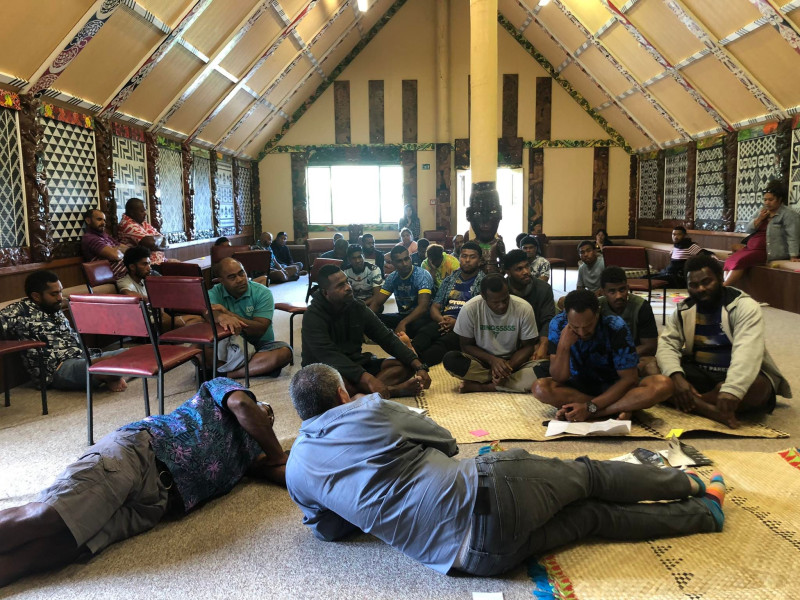Hawke's Bay Pacific community unites in wake of cyclone
Hawke's Bay Pacific community unites in wake of cyclone

(Picture caption: A fono in Wairoa has helped the Pacific community in the area to connect following Cyclone Gabrielle.)
When Cyclone Gabrielle unleashed her fury on the town of Wairoa, the Pacific community living there shifted into preparation and survival mode early.
Many Pacific people who reside in the isolated northern Hawke’s Bay town had already filled their water and fuel containers and topped up their supplies the weekend before the cyclone landed.
These proactive measures paid off immensely for the Pacific community in Wairoa after the district lost four major infrastructure links for nearly a week: water, fuel, food and communications.
On top of that, the district became totally isolated after the three major routes into Wairoa were cut-off due to large slips.
State Highway 2 between Napier and Wairoa has been completely cut-off after a bridge across a major estuary was wiped out.
The highway – a major transit link into Wairoa from the south – remains closed until further notice.
That was a small but insightful piece of intelligence shared among a group of more than 40 Pacific people who gathered for a two-day fono at Nuhaka – 48km east of the Wairoa township – on March 11-12.
The fono aimed to assist the Pacific Wairoa community connect following the devastation from the cyclone.
It was an opportunity for those people coming from the Nuhaka, Morere, Wairoa and Kotemaori communities to talanoa in a non-evasive, non-judgmental and supportive environment.
Fono participants discussed plans and confirmed their health and spiritual wellbeing, environmental aspirations, as well as their social, employment and economic needs.
They also used the talanoa to identify needs which could potentially help them live sustainably and manage their lives in Aotearoa New Zealand.
The fono was hosted by Te Iwi o Rakaipaaka Trust (TIORT), which was represented by TIORT general manager Johnina Symes, TIORT chair Pauline Symes and members of Ngati Rākaipaaka Iwi.
Notable attendees included Lyall Anania from the Ministry of Business, Innovation and Employment, Anna Hayes from the Wairoa Community Partnerships Group (a Wairoa inter-agency group to progress community development aspirations and initiatives), and Mary Wilson from the Department of Internal Affairs.
Most of the participants were of Fijian heritage, with two of Tongan heritage.
The Fijians who attended the fono were mostly forestry workers.
Ministry for Pacific Peoples Senior Communications Advisor Austin King attended the fono and says there has never been a concerted effort before to gather data relating to the Pacific people living in Wairoa.
He also says there are several other Pacific people he knows, who live in Wairoa but did not attend the fono.
“There are small pockets of our Pacific whanau living across the Wairoa district, which is rather expansive geographically,” Austin says.
“To get from one end of the district to the other can take up to two hours if you are travelling by road.”
He adds the district is rural, and many of the Pacific community live in remote places, such as Morere and Kotemaori.
“The fono provided some great insights around the individual and collective aspirations of the Fijians who work in forestry,” Austin continues.
“Many felt they were unable to lead fulfilling and prosperous lives until their working circumstances changed.
“Some comments were made around the high-risk and demanding working conditions in forestry, and one worker said he was feeling the effects on his physical wellbeing.”
A follow-up fono is scheduled to be held in the coming weeks.
